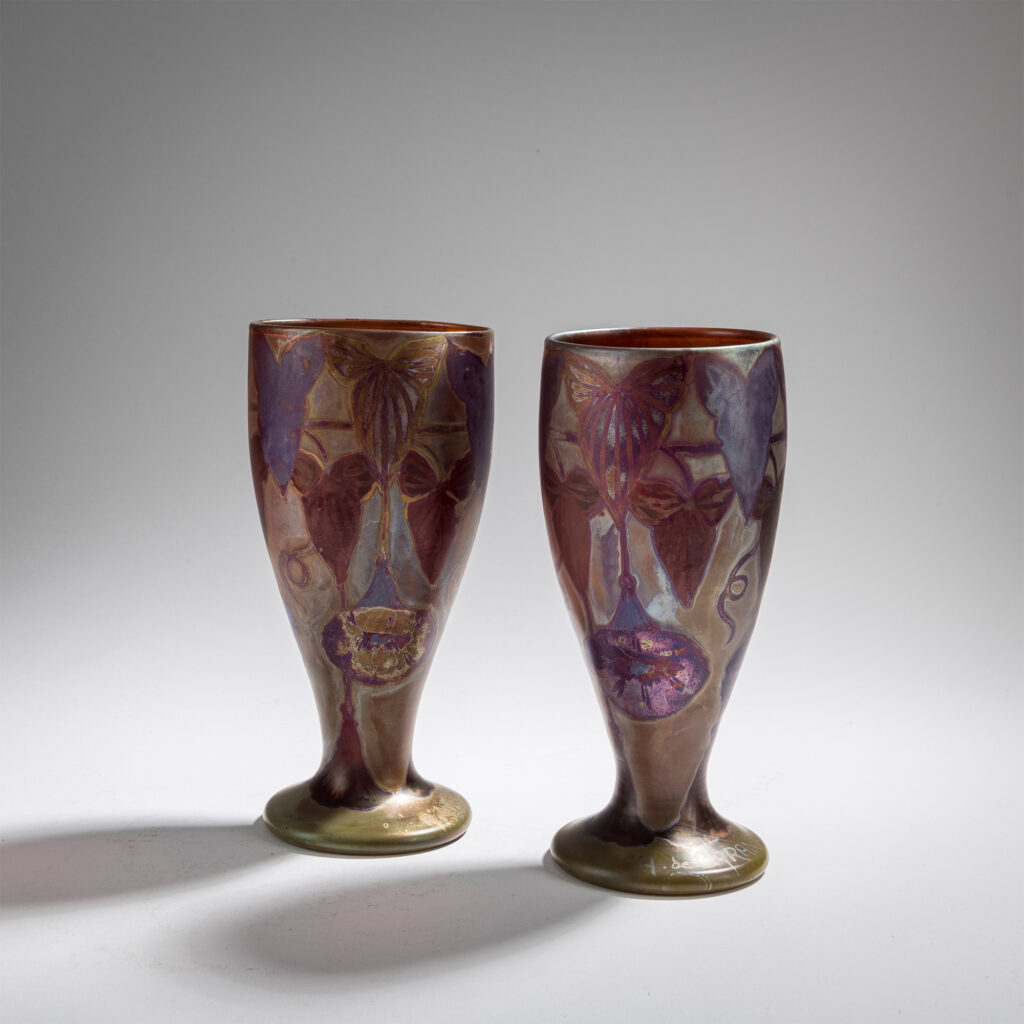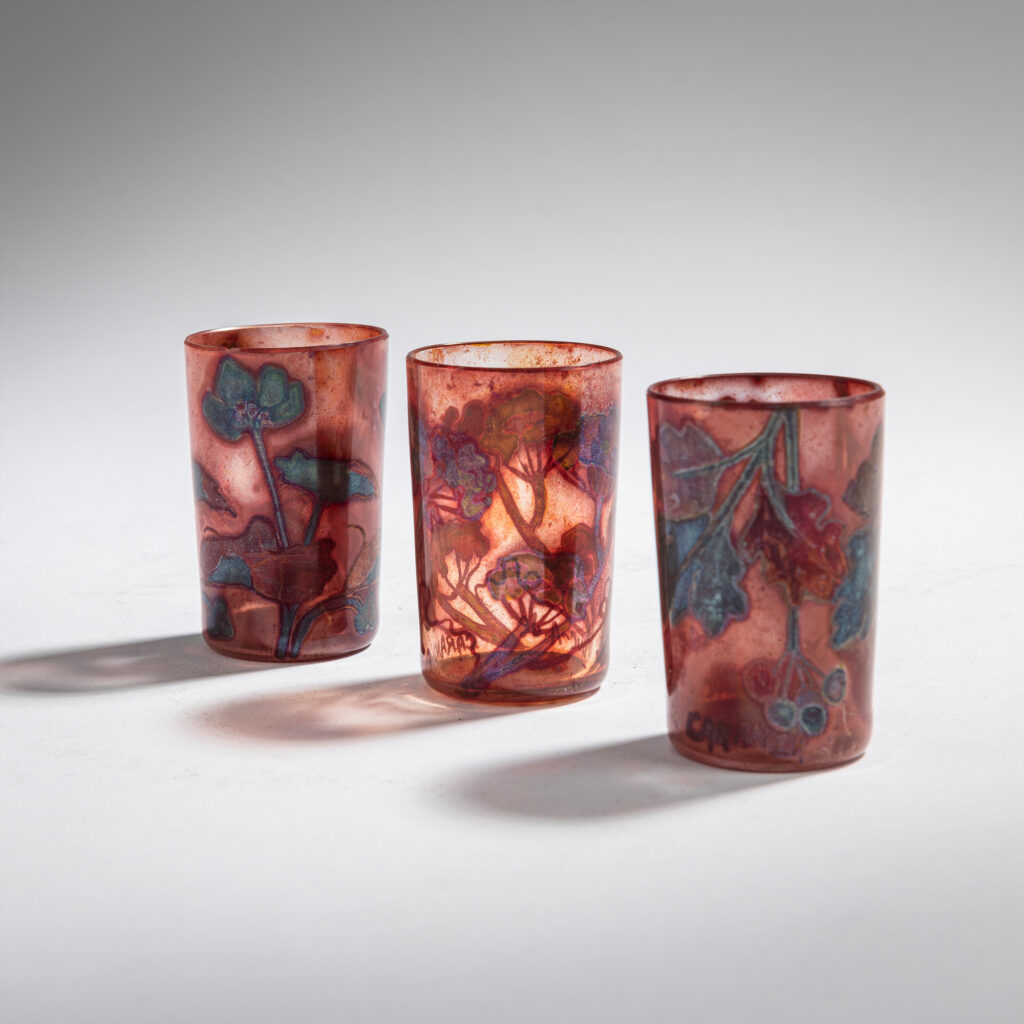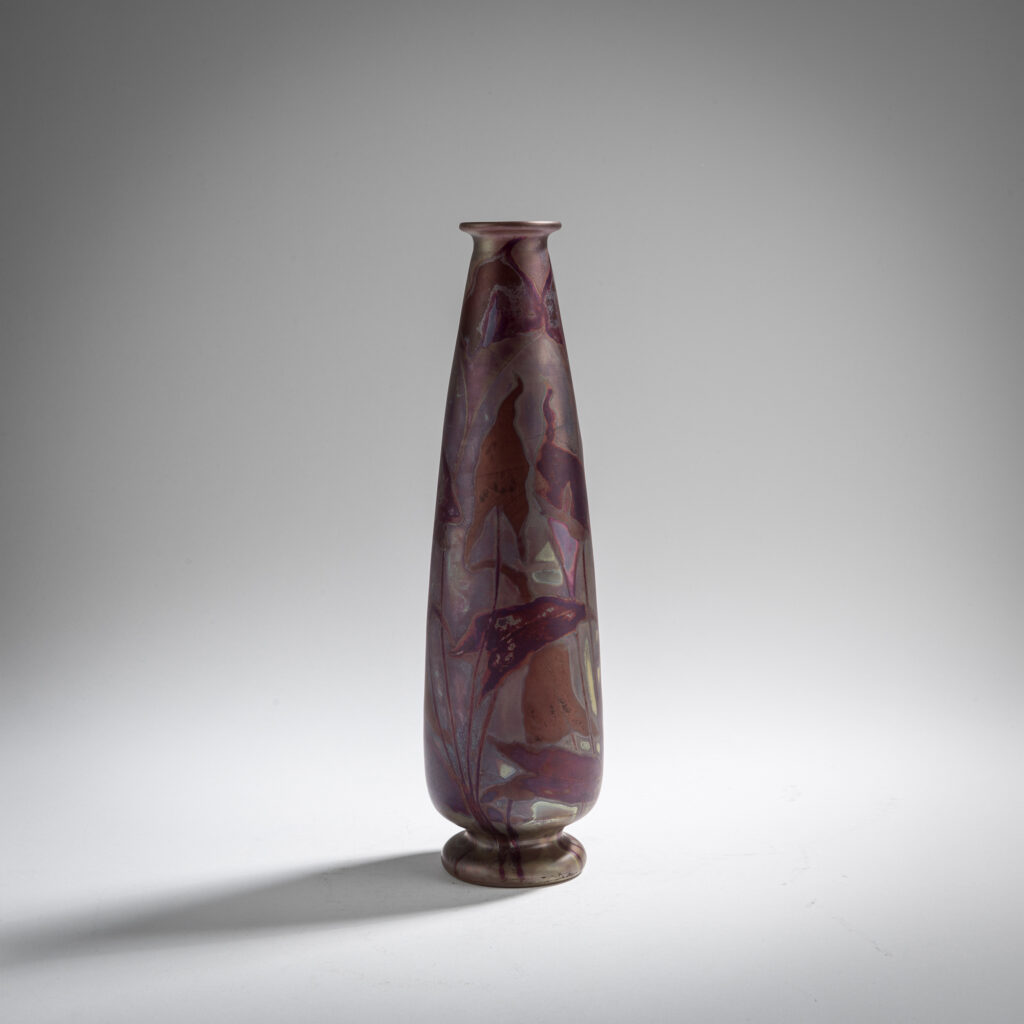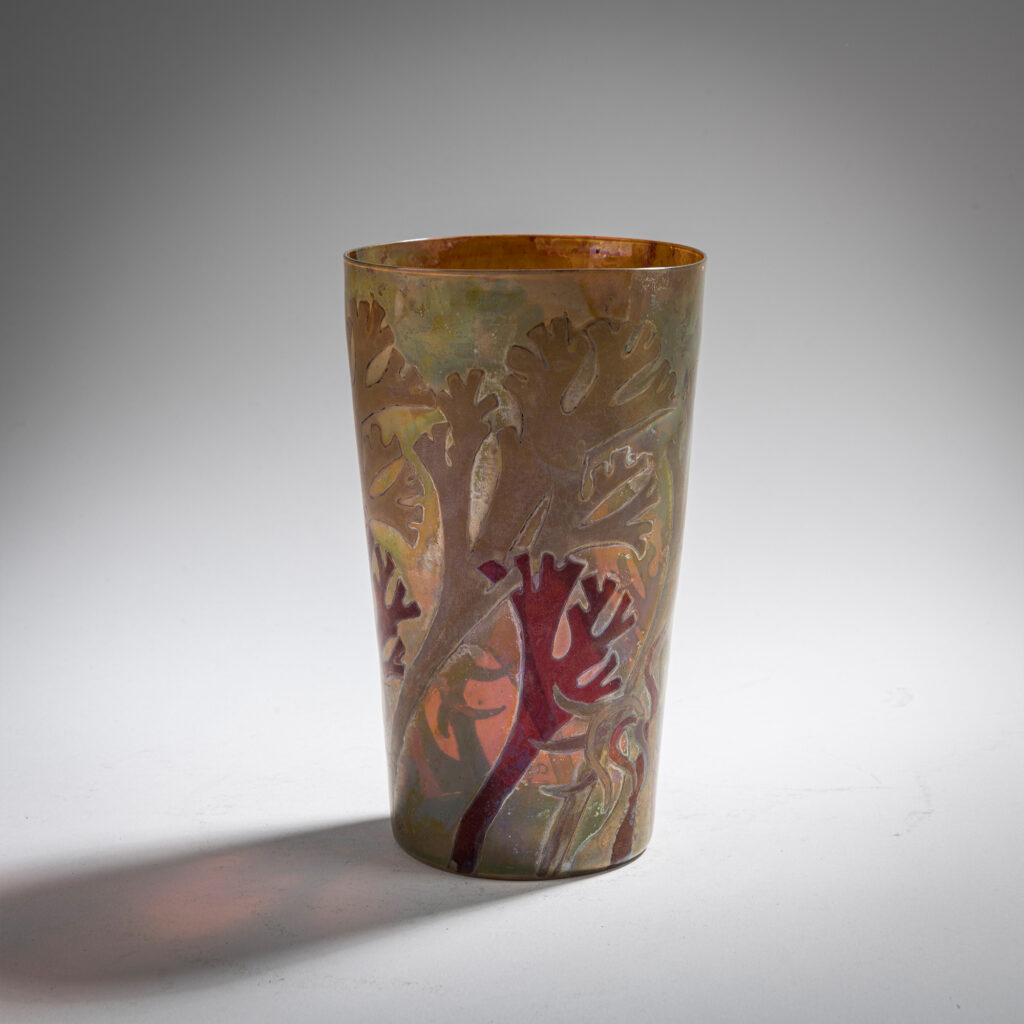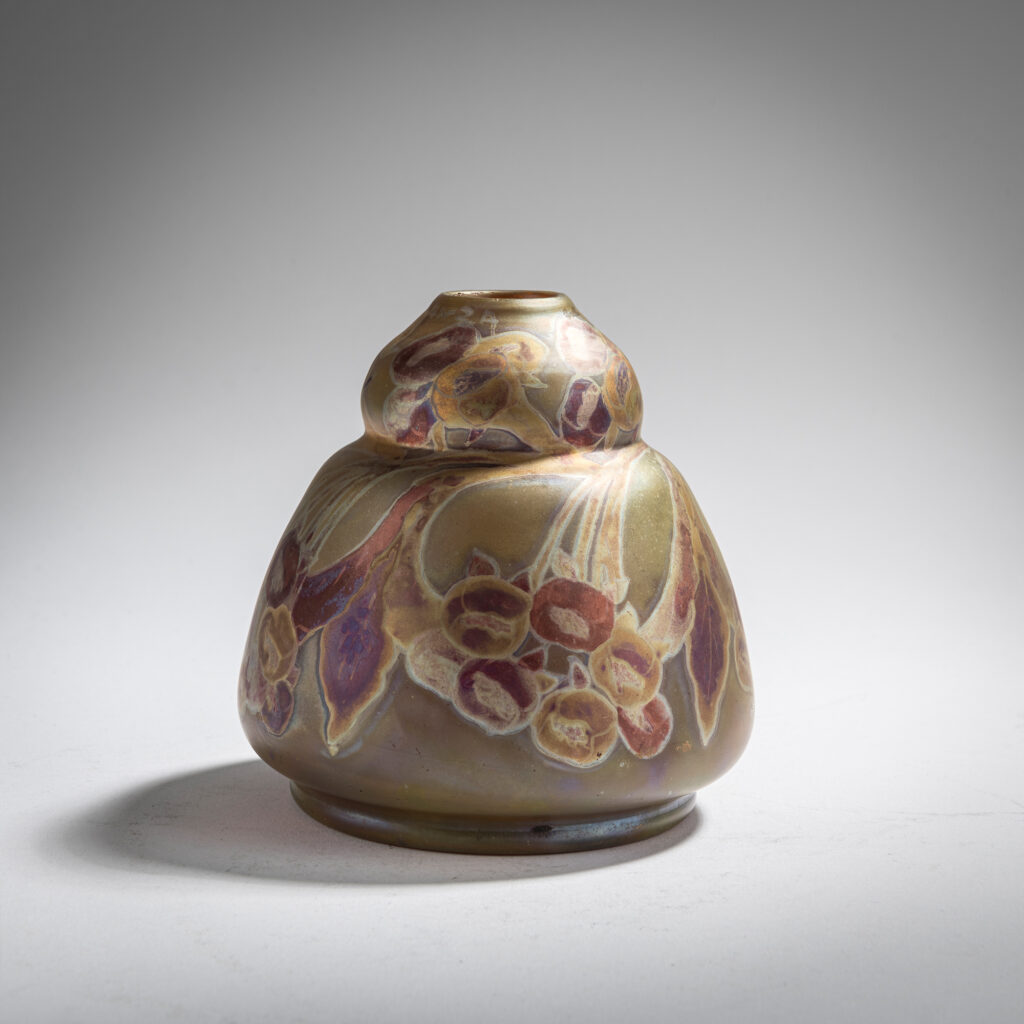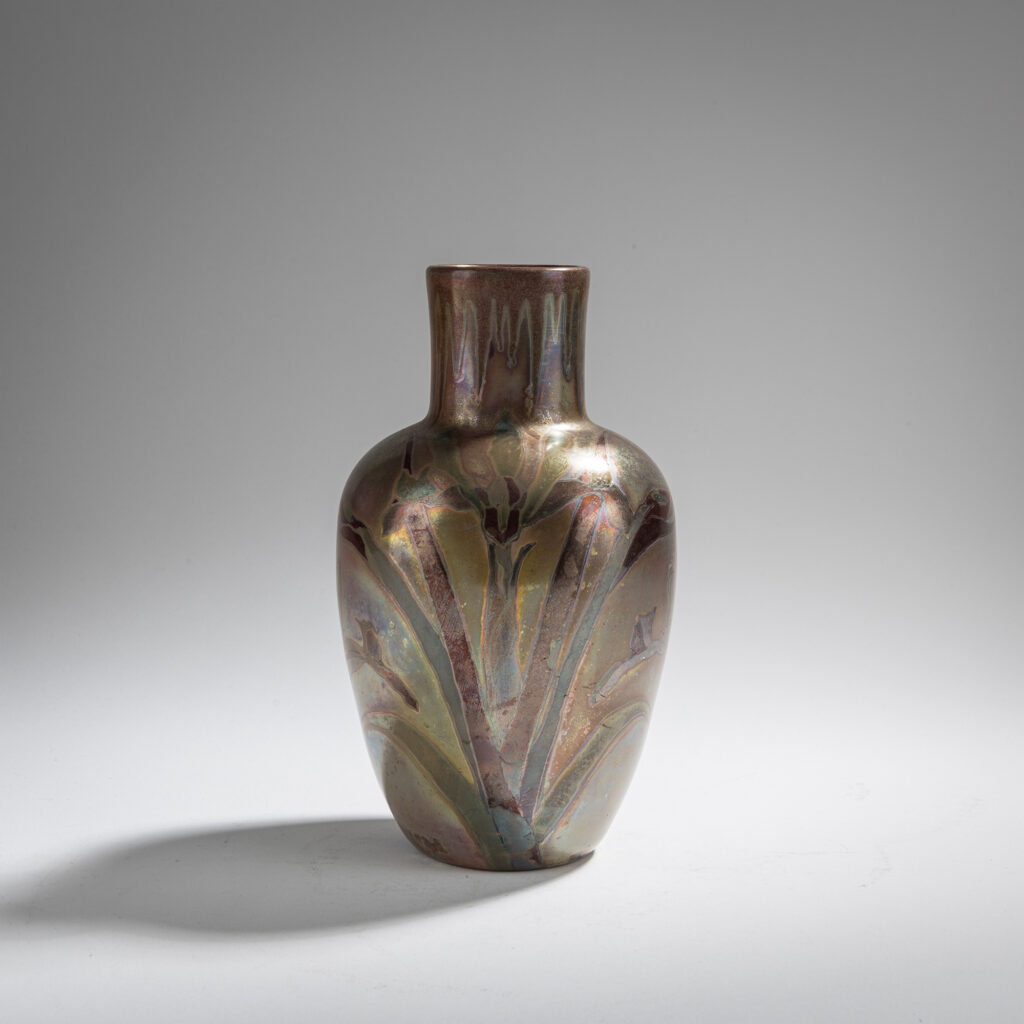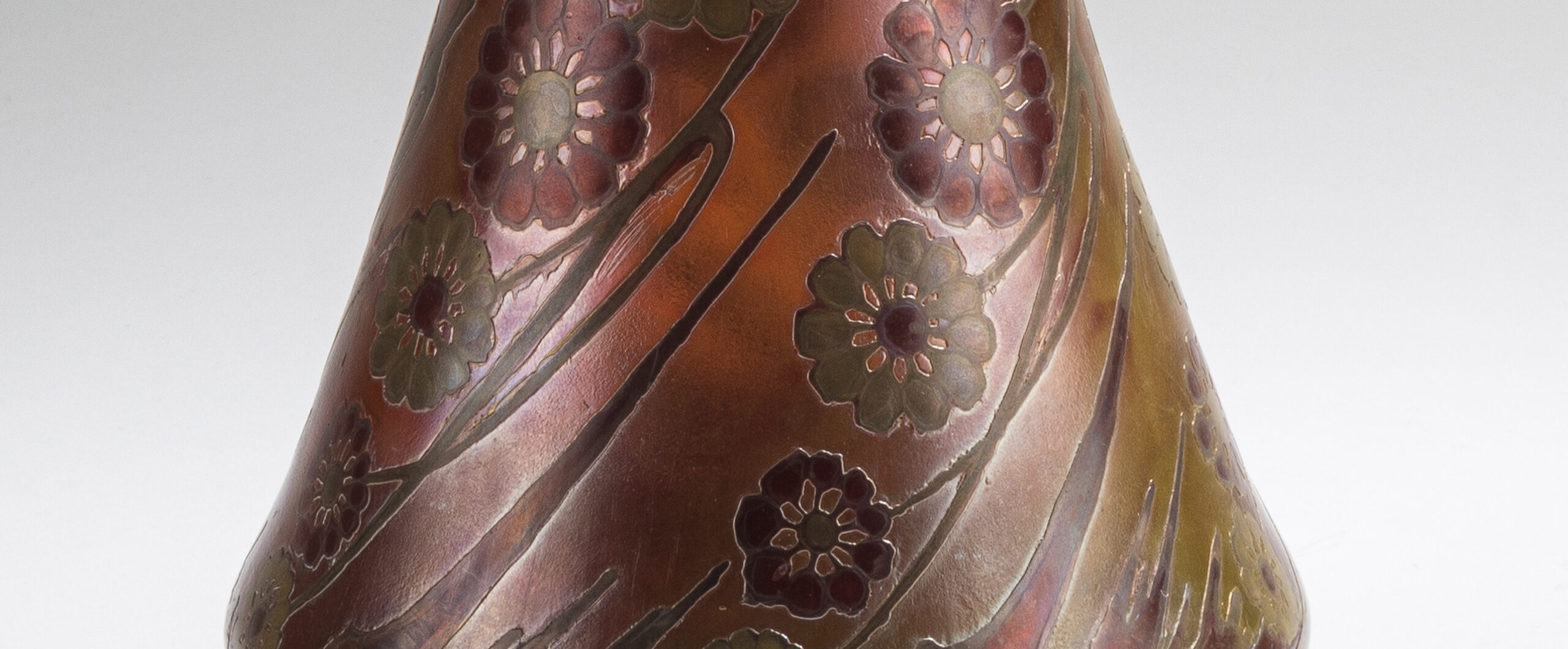
Amédée de Caranza
Rarities from a private collection
The dates of the glass artist’s life are in the dark. All that is known is that the son of French parents was employed as artistic director at the Faiencerie de Longwy in the early 1870s, where he worked on the enamel cloisonné technique. In 1875, he moved to Bordeaux to join Jules Vieillard & Cie. for which he won a gold medal at the 1878 World’s Fair in Paris. With Clément Massier on the Côte d’Azur, he finally learned how to work with metallic oxide glazes.
However, Amédée de Caranza became famous for his glass in amber, red and brown tones, on the walls of which he created wonderfully impressive floral and aquatic motifs with a delicate luster using these same metal reduction colors. De Caranza was one of the pioneers of this technique on glass and applied for several patents.
In 1890 at the latest, he made his first attempts to apply metallic iridescent decorations to glass in a studio with a kiln provided by Henri Copillet in Noyon. The earliest known glass with luster painting is dated 1895 according to Hilschenz-Mlynek/Ricke. The famous art critic and advocate of Impressionism Julius Meier-Graefe took over the distribution of de Caranza’s works from Paris in his store ‘La Maison Moderne’. Around 1902-03, de Caranza worked and signed with his partner Jeanne Duc. Around 1903, he returned from Paris to Noyon and became one of the main collaborators of Henri Copillet’s company for ceramics and finishing of art glass and windows, which lasted only until the end of the First World War.
Amédée de Caranza explained his technique for the patent application in March 1902 as follows, using a light bulb as an example:
“(…) We perform on its surface a decoration with any number of different metal oxides. These oxides can be applied either with water, gasoline, rubber, or generally with any suitable liquid or semi-liquid substance. (…) The objects are placed in a kiln, where they are fired as in the ordinary firing of glass, crystal, or opal, but during the firing the oxides are deprived of oxygen, so that they are restored to the state of native metals.
To accomplish this reduction, a suitable reducing agent such as coal, oil, carbide, hydrogen, pure gas or gas mixed with air is added before, during or after firing in sufficient quantity for the reduction to be complete…“ (Transl. from French, Author’s note).
The 14 glasses offered in the catalog from a carefully curated private collection are extremely rare on the art market and masterfully demonstrate the artist’s development. For example, his vase ‘Marrons’, 1895-1900 (cat.-no. 15) could be mistaken at first glance for a ceramic work due to the semi-sculptural chestnut leaves on an earthen ground, while Amédée de Caranza’s vase ‘Roses’ (1902) incorporates the delicate optically blown, translucent amber-colored glass into the composition (cat.-no. 25).
